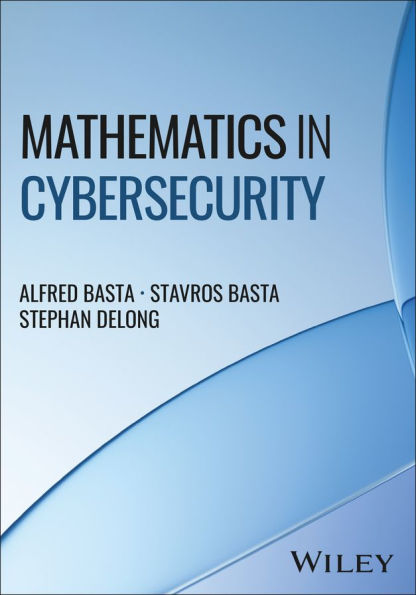With clear and concise explanations, practical examples, case studies, and real-world applications, Mathematics in Cybersecurity is an essential learning aid for readers seeking an understanding of the fundamental concepts in the field. This comprehensive book delves into a wide range of topics, including sets, logic, binary and other number systems, logic gates, combinatorial logic circuits, equations and graphs, linear equations and matrices, sequences and series. Other topics covered include right triangle geometry and trigonometry, exponential and logarithmic equations, probability, statistics, graph theory, and cryptography.
The book is an ideal companion resource for courses involving mathematical concepts in cybersecurity. It allows tailoring of the content to meet the needs of career education and online schools, ensuring it is comprehensible to students who may be learning remotely and relying on self-study.
Mathematics in Cybersecurity also includes information on:
- Discrete math, set theory fundamentals, propositional logic, and number systems and conversions
- Digital logic circuits, linear equations and matrices, sequences and recursion, and trigonometry and pre-calculus
- Complex numbers, exponential and logarithmic functions, and probability and counting techniques
- Graph theory applications and coding for cryptography
By adopting a balanced approach that combines traditional and contemporary ideas, Mathematics in Cybersecurity provides a readable and rigorous treatment of the subject matter for aspiring cybersecurity professionals, equipping them with the necessary tools to tackle complex cybersecurity challenges confidently and excel in their field.
With clear and concise explanations, practical examples, case studies, and real-world applications, Mathematics in Cybersecurity is an essential learning aid for readers seeking an understanding of the fundamental concepts in the field. This comprehensive book delves into a wide range of topics, including sets, logic, binary and other number systems, logic gates, combinatorial logic circuits, equations and graphs, linear equations and matrices, sequences and series. Other topics covered include right triangle geometry and trigonometry, exponential and logarithmic equations, probability, statistics, graph theory, and cryptography.
The book is an ideal companion resource for courses involving mathematical concepts in cybersecurity. It allows tailoring of the content to meet the needs of career education and online schools, ensuring it is comprehensible to students who may be learning remotely and relying on self-study.
Mathematics in Cybersecurity also includes information on:
- Discrete math, set theory fundamentals, propositional logic, and number systems and conversions
- Digital logic circuits, linear equations and matrices, sequences and recursion, and trigonometry and pre-calculus
- Complex numbers, exponential and logarithmic functions, and probability and counting techniques
- Graph theory applications and coding for cryptography
By adopting a balanced approach that combines traditional and contemporary ideas, Mathematics in Cybersecurity provides a readable and rigorous treatment of the subject matter for aspiring cybersecurity professionals, equipping them with the necessary tools to tackle complex cybersecurity challenges confidently and excel in their field.

Mathematics in Cybersecurity

Mathematics in Cybersecurity
Hardcover

